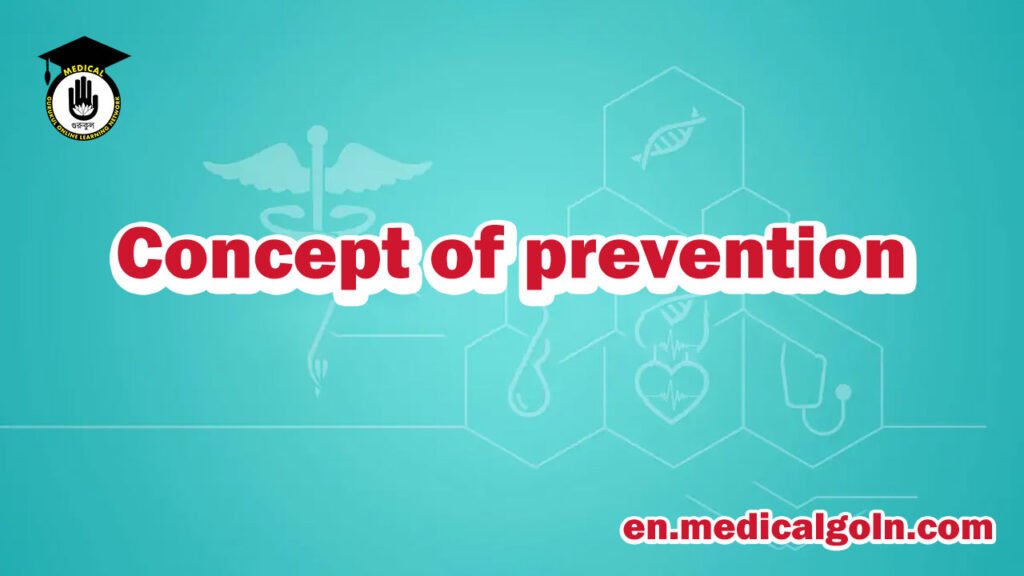Today is our topic of discussion Concept of prevention
Concept of prevention
Definition:
Prevention means ‘management of those factors that could lead to disease so as to prevent the occurrence of the disease’. It includes all steps that stop the progress of disease at any stage of its course. So, the aim of prevention is –
- To promote health
- To preserve the health
- To restore the health, when it is impaired
- To minimize sufferings and disability
Levels of prevention:
Primordial prevention:
It is a new concept for prevention of chronic diseases by preventing the development of risk factors in countries or population groups in which they have not yet appeared. It involves change in social, environmental, behavioural and cultural conditions. Example- some adult health problems (e.g., obesity, hypertension) have their early origins in childhood. because this is the time when lifestyles are formed (for example, smoking, eating patterns, physical exercise).
Primary prevention:
Primary prevention defined as the action taken prior to onset of disease. Two modes of intervention for primary prevention – health promotion’ and ‘specific protection’. The approach to primary prevention of risk factors for chronic diseases done through two ways – population strategy and high-risk strategy.
Secondary prevention:
It is defined as action taken with an aim to early detection and treatment of the disease, so that adverse sequelae can be prevented. The specific interventions are early diagnosis (e.g. screening tests and case finding programs) and adequate treatment.
Tertiary prevention:
It is defined as all the measures available to reduce or limit impairments and disabilities, and to promote the patients conditions.
The interventions are disability limitation and rehabilitation.
Definition of early diagnosis:
It is the detection of disturbances of homeostatic and compensatory mechanism while biochemical, morphological and functional changes are still reversible.
Definition of ‘impairment’:
It means ‘any loss or abnormality of psychological, physiological or anatomical structure or function’
Definition of ‘disability’:
It means ‘any restriction or lack of ability to perform an activity in the manner or within the range considered normal for the human being’
Public health:
Public health has been defined as “the science and art of preventing disease. prolonging life and promoting health and efficiency through the organized community efforts”.
Preventive medicine:
The branch of medicine which aims at preventing the appearance of diseases through immunization, exercise, proper eating habits and other life style issues. It is applied to ‘healthy’ people in the populations. Its primary objective is prevention of disease and promotion of health.
Curative medicine:
It is the kind of health care traditionally oriented towards seeking a cure for an existent disease or medical condition.
Difference between preventive medicine and curative medicine:
Palliative medicine:
The branch of medicine which concentrates on reducing the severity of disease symptoms, such as pain.
Social medicine:
Social medicine is the study of man as a social being in his total environment. It is concerned with all the factors affecting the distribution of health and ill-health in population, including the use of health services. Social medicine is not a new branch of medicine, but rather an extension of the public health idea reflecting the strong relationship between medicine and social sciences.
See also :

